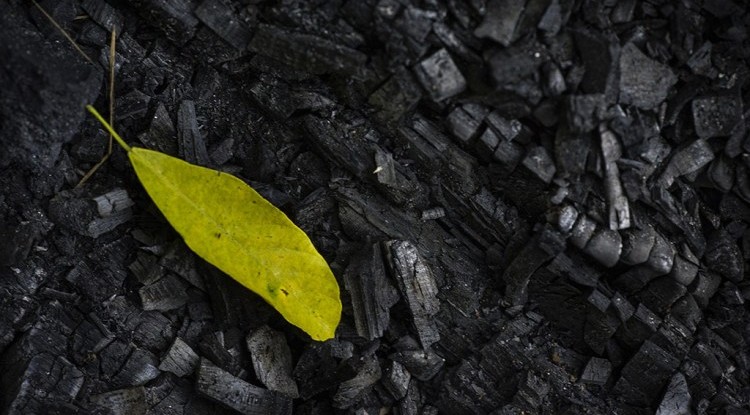
60 million people depend on the Congo Basin forests for their livelihoods. Ollivier Girard/CIFOR
YAOUNDE, Cameroon (14 November, 2012)_Rainforests in the Congo Basin are being cleared at an alarming rate amid global demand for mineral, energy and wood resources from Africa, experts say, commending efforts by affected nations and other stakeholders to try to create an effective monitoring system.
Pressures on the 200 million hectare forests — though not has high-profile as those in the Brazilian Amazon or Indonesia — are enormous, said Richard Eba’a Atyi, the Center for International Forestry Research’s coordinator for central Africa.
In the grab for natural resources, newly built roads have opened up vast tracts of virgin rainforests to loggers (both legal and illegal), miners and villagers.
Booming populations that rely on the forest — which spreads across the Democratic Republic of Congo, most of Congo-Brazzaville, the southeast of Cameroon, southern Central African Republic, Gabon and Equatorial Gabon — also have resulted in increased demand for fuel wood and the clearing of land for food crops.
The threats have long been “obvious,” Atyi said, but up until recently there was “no viable scientific information mechanism to deal with these issues.”
That’s slowly starting to change.
Stakeholders in the region and beyond, including CIFOR, began with the publication in 2006 of The Forests of the Congo Basin: State of the Forest, which has provided decision-makers in the region with a clearer picture of the overall state of the forests.
The reports — being published biannually through 2014 under the auspices of the now-permanent Observatory for the Forests of Central Africa (OFAC) — also have been pivotal in guiding effective policy making and strategy development, and constituted a base for future periodical evaluations.
For instance, said Atyi, pointing to focus on sustainable management of government concessions for industrial timber logging as one of the successes, “we have gone from zero hectare certified for sustainable forest management to 5 million hectares.”
“We also have about 15 million hectares managed according to forest management plans.”
“But we have got our work cut out, because this is only part of the story,” he added, noting that the informal sector, which plays a key role in the economies of the countries of the Congo Basin, has not been properly documented.
“We need to keep monitoring that sector as well.”
There’s a lot at stake.
The livelihoods of around 60 million people depend on the Congo Basin forests, which also generate funds for the states in the region through timber exploitation, comprise a unique biodiversity and regulate the major rivers across the region.
And, when the trees are clear cut or burned, millions of tons of carbon emissions are pumped into the atmosphere.
“We knew for some time that there was an increasing pressure on forest resources of the Congo Basin due to population growth, unending wars leading to massive human displacement, economic development in the region and increasing global demand,” said Atyi, who helped author several of editions of the report.
“The forestry community and other stakeholders had to act before the situation got worse.”
Ten central African countries added to those efforts in July this year, launching an 18-month project to help improve national rainforest monitoring systems and regional cooperation.
The project will be managed by the Central Africa Forests Commission (COMIFAC), in collaboration with the UN’s Food and Agriculture Organisation (FAO) and Brazil’s National Institute for Space Research (INPE).
One man who has experienced massive deforestation in the Congo Basin said such efforts could not come soon enough.
Jean Mapima has spent nearly 30 years in conservation. For the last six, he’s been conservator at the Democratic Republic of Congo’s Tumba-Lediima National Reserve, located 500 kilometers northeast of the capital, Kinshasa.
“I have had running battles with a large section of the community here who do not understand why we have to keep them out of over 7,500 square kilometers of fertile land that belongs to their ancestors,” he explained.
“We need the help of our partners including CIFOR to educate our people on the need to protect our forests before it is too late.”
There’s been little he hasn’t seen during his lifetime.
“I have experienced huge deforestation in the Congo where people rely on forests for almost everything,” he said.
“For instance, a lot of forests have been cleared for plantations as people move around seeking fertile lands wherever they can find them. Farming norms are not respected at all in this part of the world.”
“I have also seen an increase in large-scale, unauthorised hunting for bush meat with sophisticated weapons including AK47s.”
Mapima and others say they can only hope efforts to establish an effective forest monitoring system will address those and other issues.
For more stories from the Congo Basin, click here.
We want you to share Forests News content, which is licensed under Creative Commons Attribution-NonCommercial-ShareAlike 4.0 International (CC BY-NC-SA 4.0). This means you are free to redistribute our material for non-commercial purposes. All we ask is that you give Forests News appropriate credit and link to the original Forests News content, indicate if changes were made, and distribute your contributions under the same Creative Commons license. You must notify Forests News if you repost, reprint or reuse our materials by contacting forestsnews@cifor-icraf.org.
